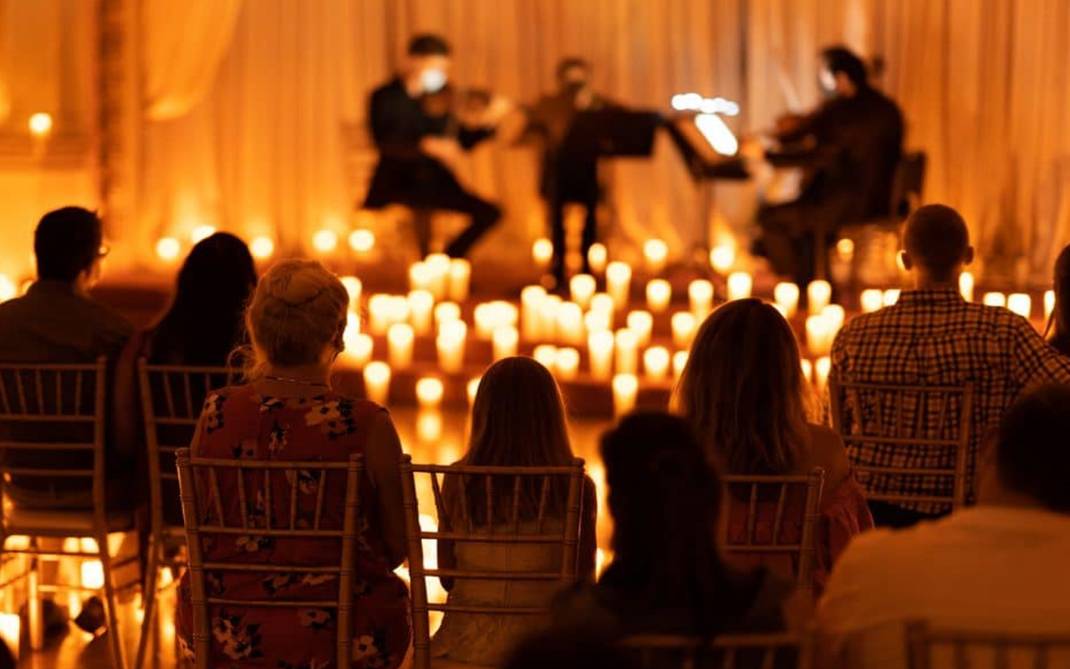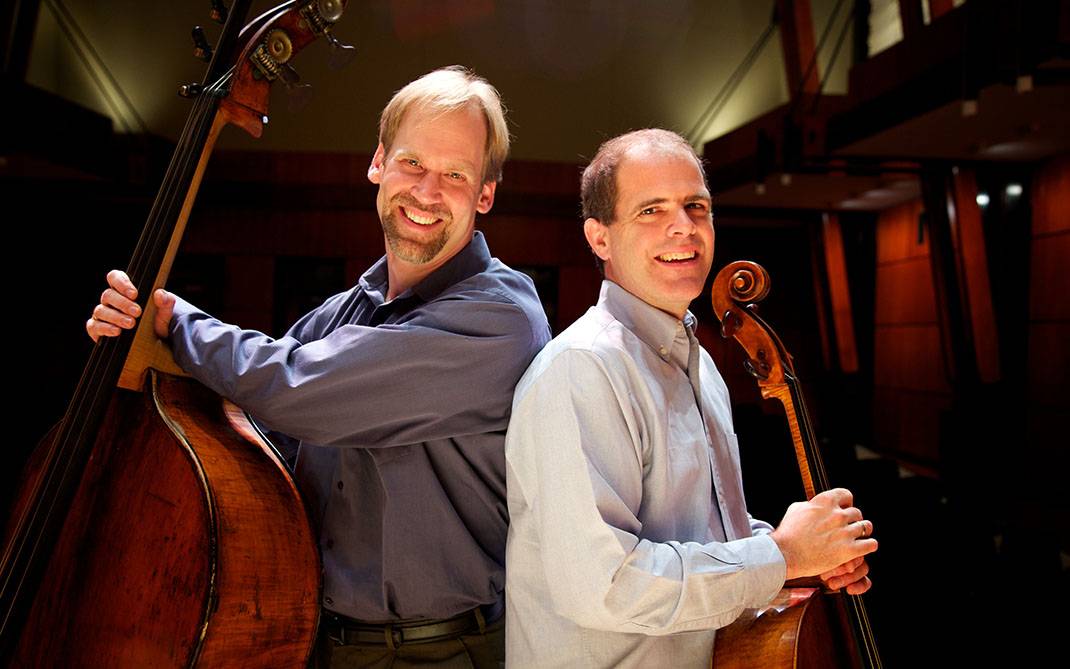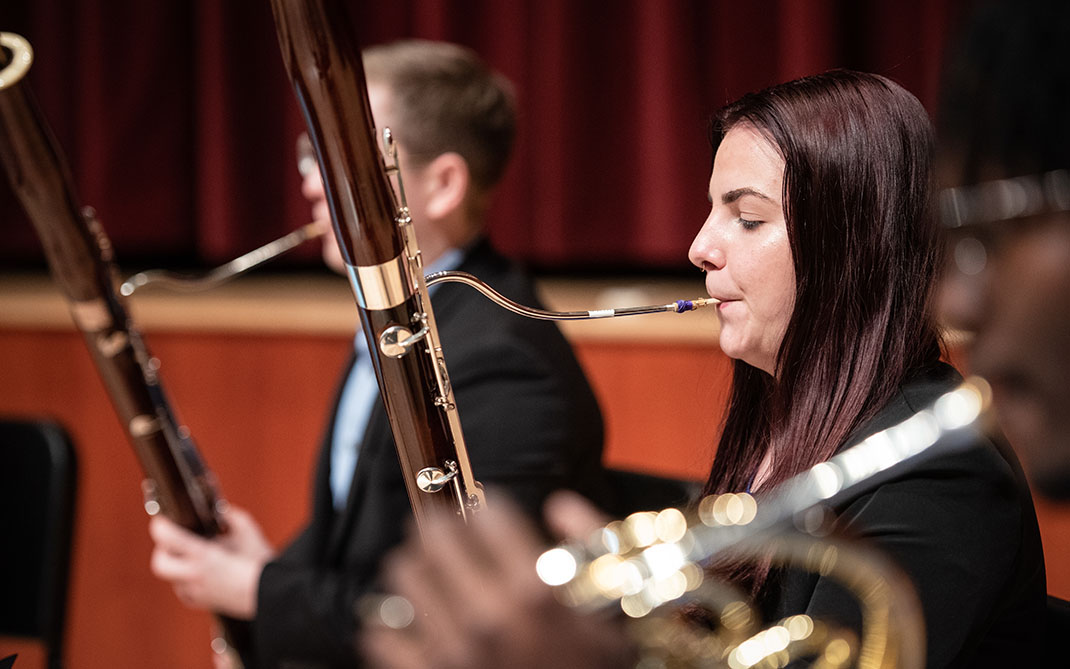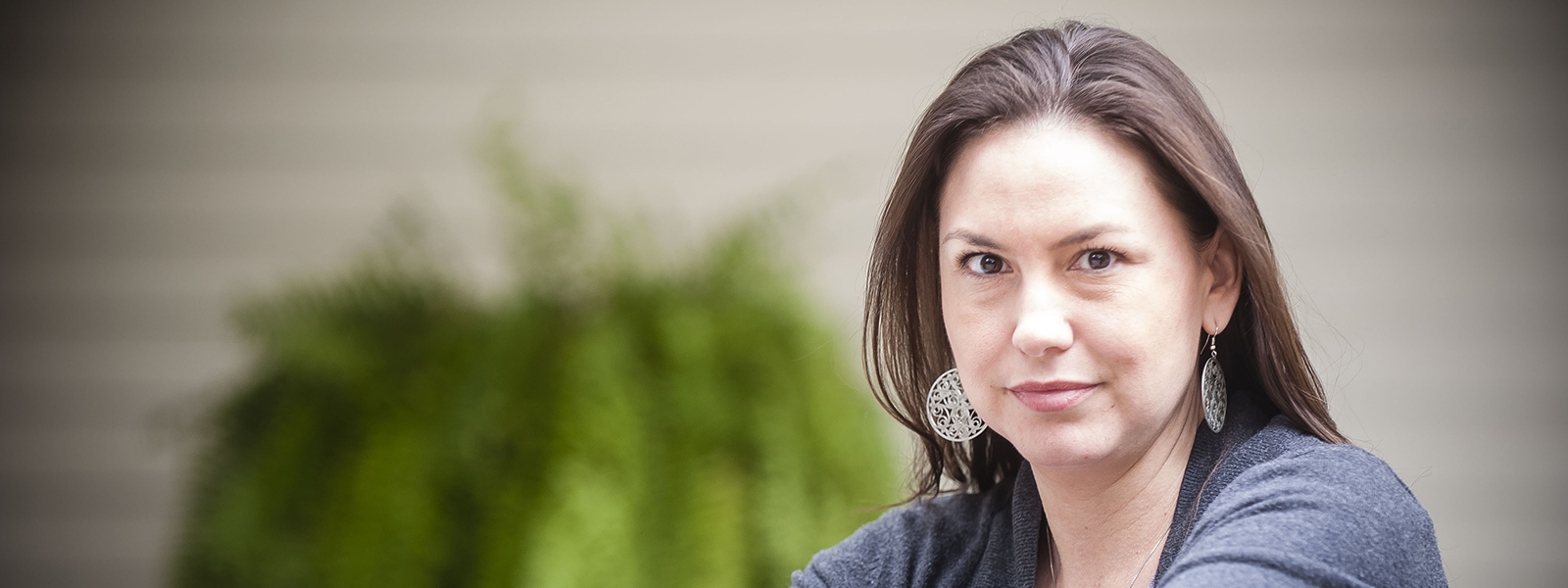An Artist's Journey Along the Trail of Tears
Cherokee actress and writer DeLanna Studi dreamed of one day following the footsteps her ancestors were forced to travel along The Trail of Tears and then finding a way to share their tragic yet triumphant legacy with audiences around the country.
Now Studi is realizing that dream, with key support from the Kenan Institute for the Arts at the University of North Carolina School of the Arts and other cultural partners.
This summer, Studi embarked on a six-week journey to retrace the path her great-great-grandparents took during the forced relocation of more than 16,000 Cherokee from their homelands in the 1830s. As many as 6,000 perished along the way.
Accompanied by a documentarian and her father Thomas, a full-blooded Cherokee who speaks the language, Studi began the modern-day journey at her ancestral homestead in Murphy, North Carolina, which she discovered while doing research for the creative project a year earlier. Working in partnership with dozens of community organizations, they hosted workshops and storytelling circles at significant sites along the trail.
This fall, working alongside Kenan Executive Director Corey Madden, Studi began shaping the stories she documented into an original dramatic work, titled “And So We Walked: An Artist’s Journey Along the Trail of Tears.”
“We sat on the ground where they walked,” she says of the experience. “And in some cases, we walked on the ground where they died. I thought I would need Dad to lift me up. But just by having my father there, I was a lot stronger than I would have been.”
The feeling was mutual, says Thomas Studie, a retired machinist. “She kept me going. It was just heartbreaking to see where they went, coming down this way,” he recalls. “You could still see the wagon tracks.”
Madden, an award-winning writer and director with 25 years of experience in new play development, is directing Studi’s performance in partnership with the Center for the Study of the American South at UNC-Chapel Hill, the Southern Oral History Program and the American Indian Center.
“I found myself standing next to someone who is a living example of a decision that wasn’t under their control,” recalls Madden, who joined Studi and her team on parts of the trail. “DeLanna’s ancestors were imprisoned, held all winter, not fed, then forced to walk to Oklahoma.”
“It’s a piece of art making,” she adds, “but it also is a piece of civic engagement.”
Growing up, far from home
Studi grew up in rural Oklahoma, where she did projects about the Trail of Tears as a child.
“For me, our lives began in Oklahoma,” she says. “But I was always fascinated with knowing where we came from before the trail.”
What Studi learned about the plight of her ancestors as a school girl didn’t jibe with the stories passed down among the generations of her people. “That’s usually what happens with history,” she notes. “The people writing it, they gloss over the accounts.”
During a difficult period in high school, Studi’s father encouraged his shy daughter to take drama, speech and debate classes, which fed an interest in acting. Although she originally studied to be an architect in college, she continued acting on the side and caught the eye of a director. He saw talent and pushed his student to pursue it.
With her parents’ permission, Studi headed to Los Angeles at age 22 with a list of five goals her father asked her to complete within a month: get an apartment, get a job, enroll in acting class, hold an Oscar and, yes, appear in a music video with 1990s alt-rock band The Smashing Pumpkins.
“I did all five in a month and I got to stay,” she says with a laugh. “My father believed that if something was meant to happen it would happen, you just had to put some energy into it. I’ve been in L.A. for over a decade now.”
A few years ago, the actress finally put her “dream project" on paper when she applied for a fellowship with the Oregon Shakespeare Festival. Her proposal: to walk the Trail of Tears with her father and collect stories along the way from native Cherokee culture bearers.
“It’s something I’ve always wanted to do,” she recalls. “As a native actor and artist, there is no formal schooling for us in traditional native theater. The way I would have to learn about the traditional storytelling techniques of my culture would be to go on the road and visit these culture bearers. Because most of them aren’t teaching at colleges.”
Studi didn’t win the fellowship. But soon after, she would meet Corey Madden. And a conversation between the two would change the course of their lives and their work.
Crossing paths
They met in 2013 on a project Madden co-wrote and directed in L.A. Studi auditioned for “Tales of the Old West” and won a role.
After a grueling rehearsal one day, the two went out for a bite to eat, Studi recalls. “Out of nowhere, she asked, ‘So what is your dream project?’ I told her about it and she said, ‘Oh, that sounds amazing.’ ”
Studi’s proposal resonated with Madden. So much so that six months later, after moving across country to take a job as the Executive Director of the Kenan Institute for the Arts in Winston-Salem, Madden reached out to the actress again. Madden continues to work as an artist as part of her creative research activities for UNCSA. And the Institute receives funding each year to promote creative leadership and innovation in the arts.
“Are you still interested?” the director asked.
“Of course,” the actress answered.
Finding family
The following July, 2014, the two embarked on a Kenan-funded research expedition to the town of Cherokee in search of Studi’s ancestral roots. Officials at the Museum of the Cherokee Indians opened the archives to Studi, and what she discovered among the documents was “equally fascinating and horrifying at the same time.”
The actress remembers a defining moment that would solidify her dream project:
“There was an anthropologist who had found these maps showing where the Army did surveillance on the Cherokee families in that area. They were appraising the properties to find out how easy would it be to remove these families quickly….
“I blindly reach for a black binder. I am looking at detailed excavations of two homesteads — they went through their trash to find out what the families were like. The family I was looking at was one of the wealthiest in the area — they had matching dishes, a beautiful beaded earring, peacock bones at this homestead. So we flip to the front of the page and it was my family. There were 30,000 pages, binders upon binders, and that’s the one I opened to.”
From there, the two traveled to Murphy and found where the homestead once stood along the Hiwassee River. “I felt the joy and excitement of actually being able to go home again,” Studi remembers. “I also felt the sadness and anger and bitterness because this was no longer our land.”
She wondered aloud: What would life had been like for her family had the Trail of Tears never happened?
“Then Corey said, ‘I believe we can do your project. You have a story here.’ We started writing grants and reaching out to people and a year later we are on the trail.”
By Studi’s side was her father, who conducted interviews in native Cherokee. “For me it was important to have him there,” she says. “He not only acted as my father, he was my language expert and cultural consultant.”
It was equally as important to him. In Illinois, father and daughter visited a cemetery where numerous Cherokees who died on the trail were laid to rest.
“I don’t know how to describe it, really. It just brings tears to your eyes to see something like that,” he says. “I got to see a lot of things I wouldn’t have seen if it weren’t for my daughter and the Kenan Institute.”
Supporting the making of art
Studi’s dream project has garnered support from more than half a dozen native American and cultural institutions.
Most recently, the Kenan Institute and the Cherokee Historical Association received a Cherokee Preservation Foundation grant to fund a three-week “creative co-laboratory” in Cherokee in the summer of 2016. The project will bring together performers and leaders of two of the country's most important Native American theaters — North Carolina’s renowned outdoor drama Unto These Hills and L.A.’s Native Voices at the Autry National Center — with faculty from UNCSA to share best practices.
Studi plans to return to Cherokee during that time to present a free public performance of “And So We Walked.”
For Madden, it’s a way to give back to the Cherokee people and the performers in “Unto These Hills.”
“A potter can sell a pot all year long. An actor in that community only has a summer season. In the winter, everyone is out of work,” she says. “If you could change the circumstances so the actors in Cherokee could be in TV shows or movies or theater projects in the Southeast, that could make a real difference for them.”





